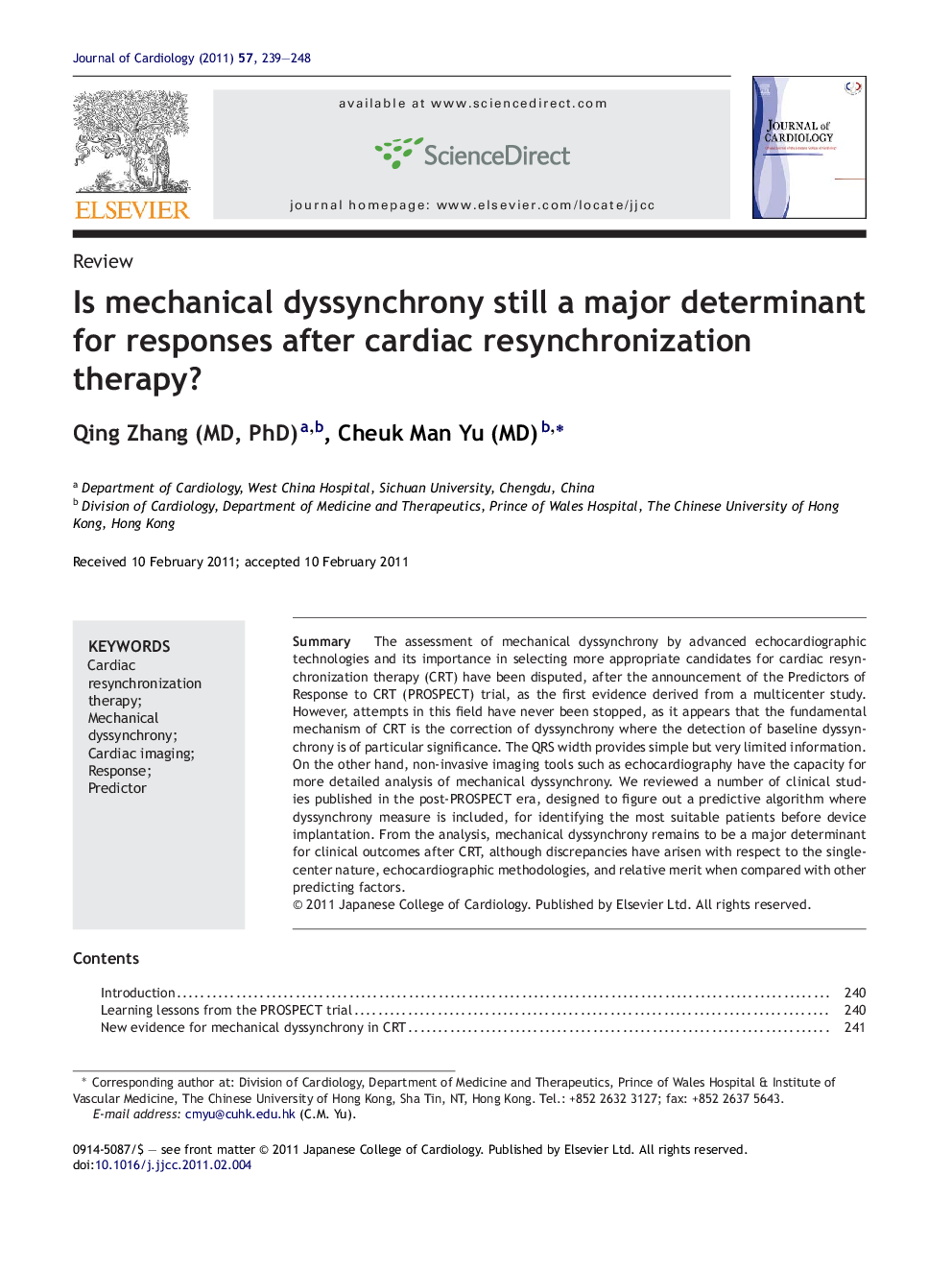| کد مقاله | کد نشریه | سال انتشار | مقاله انگلیسی | نسخه تمام متن |
|---|---|---|---|---|
| 2963251 | 1178547 | 2011 | 10 صفحه PDF | دانلود رایگان |

SummaryThe assessment of mechanical dyssynchrony by advanced echocardiographic technologies and its importance in selecting more appropriate candidates for cardiac resynchronization therapy (CRT) have been disputed, after the announcement of the Predictors of Response to CRT (PROSPECT) trial, as the first evidence derived from a multicenter study. However, attempts in this field have never been stopped, as it appears that the fundamental mechanism of CRT is the correction of dyssynchrony where the detection of baseline dyssynchrony is of particular significance. The QRS width provides simple but very limited information. On the other hand, non-invasive imaging tools such as echocardiography have the capacity for more detailed analysis of mechanical dyssynchrony. We reviewed a number of clinical studies published in the post-PROSPECT era, designed to figure out a predictive algorithm where dyssynchrony measure is included, for identifying the most suitable patients before device implantation. From the analysis, mechanical dyssynchrony remains to be a major determinant for clinical outcomes after CRT, although discrepancies have arisen with respect to the single-center nature, echocardiographic methodologies, and relative merit when compared with other predicting factors.
Journal: Journal of Cardiology - Volume 57, Issue 3, May 2011, Pages 239–248